The Bowery Alliance of Neighbors is a grassroots organization working to protect residents, small businesses, the neighborhood and the historic character of the Bowery.

Did You Know that the Bowery...
is New York City’s Oldest Thoroughfare !
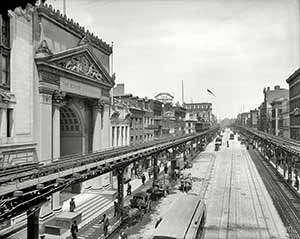
Detail from NYC Landmark Citizens Savings Bank at 58 Bowery.
Stretching 1.5 miles from Chatham Square to Cooper Square, the Bowery is New York City’s oldest thoroughfare. Originally a Native American foot path of the Lenape tribe, under the Dutch (1625-1664) the road connected New Amsterdam with the farms to the north. This is where it gets its name: Bouwerij is Dutch for farm.
Between 1643 and 1651,The Dutch freed slaves and allowed them to settle on selected lands adjacent to Bowery. This became the first free black settlement in Manhattan.
Under the English (1664-1783), the Bowery became part of the Boston Post Road with the surrounding lands largely controlled by the landed gentry. Families like the Bayards and de Lanceys building mansions or townhouses.
In the second half of the 1700s, the lower Bowery was a butchers district. Built in 1785, the city’s oldest standing brick house — at 18 Bowery — was owned by the butcher Edward Mooney.
After the British fled in 1783, George Washington and his troops triumphantly marched down the Bowery and raised glasses at the Bull’s Head Tavern located at 48 Bowery.
The Bowery was the convergence point for multiple historic neighborhoods including Chinatown, Little Italy, NoHo, the East Village and the Lower East Side. The working class the Bowery Boys gang and waves of Irish, Italian, Chinese, German and Jewish immigrants came here to drink, have a good time and express themselves.
NYC’s first entertainment district, the Bowery has seminal connections to tap dance, minstrelsy, vaudeville, Yiddish theater, Stephen Foster and Irving Berlin.
Site of America’s first streetcars (1832), the Bowery was one of the first streets to become electrified.
To see the Bowery in its glory, one must visit it at night. It is a blaze of light from one end to the other — James D.McCabe, New York by Sunlight and Gaslight, 1882
In the mid-1800s, abolitionism was based in the Bowery. Abe Lincoln’s 1859 anti-slavery speech at Cooper Union propelled him into the presidency.
Though it declined in the 20th century, as dive bars and flop houses proliferated, the Bowery’s low rents helped attract a cutting edge artist community that has helped nurture Beat literature, Abstract Expressionism, improvisational jazz and finally, punk rock.
The Most Interesting Place in New York
— Stephen Crane
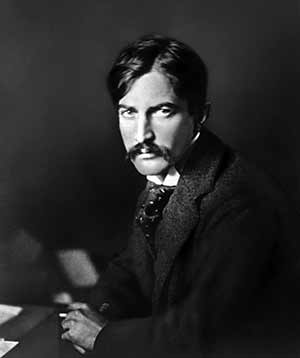
Stephan Crane
…one of the great American streets, as charged with historical significance as Beale Street in Memphis or Basin Street in New Orleans — Luc Sante
Stephen Crane (Red Badge of Courage), who wrote of the Bowery in classic works like Maggie: A Girl of the Streets, was not alone in finding it the Walt Whitman
most interesting place in New York.
As the business hub for the Lower East Side and NYC’s affordable first entertainment district, it was the unique multi-ethnic destination point for the working class, roughneck gangs, immigrants and thrill-seeking slumming parties. One of America’s first avenues with streetcars, trains and electricity, its spectacular nightlife was renowned to sailors and travelers around the world.
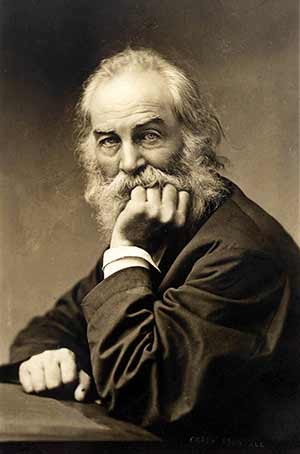
Comparing it to the more genteel Broadway, Walt Whitman found the Bowery more democratic, with a broader, jauntier swing.
He loved its denizens’ salty language and uninhibited ways, as did Mae West whose raunchy signature work, She Done Him Wrong (1933) was set there. From 1800s to the present---from tap dance, vaudeville, Yiddish theatre, Stephen Foster, Irving Berlin, and Lincoln’s anti-slavery speech at Cooper Union, to Abstract Expressionism, Beat literature, jazz and punk rock — few places have had such an extraordinary impact on American history and culture.
The Bowery is something of a star performer in Gotham, from its days as a Lenape foot trail and Dutch farm road. Washington’s troops marched down it on retaking the city, as did herds of cattle heading for Astor’s abattoir, and the nation’s first street car line ran along it as well. Lincoln raised his presidential profile at Cooper Union, and as the city’s working class entertainment district it helped launch tap dance, minstrelsy, Yiddish theater, and vaudeville. It nurtured Foster and Berlin, was adored by Crane and Whitman, and as a linguistic seedbed it enriched the American vernacular. The street will have pride of place in Gotham II, too, both for hosting the city’s down and out, and for phoenixing into a thriving cultural incubator for Beats, Abstract Expressionists, and punk rockers. — Historian Mike Wallace in 2013 Letter to City Planning
Washington and Troops Marched Down the Bowery !
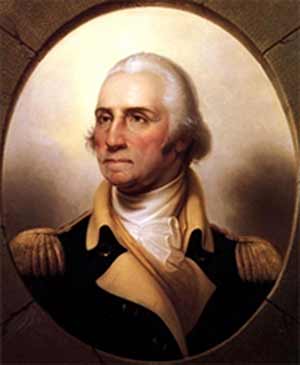
General George Washington and troops marched down the Bowery in triumph after the British evacuated the city on Nov. 25, 1783. Stopping to rest and water their horses before marching further south into New Amsterdam, they raised glasses at the Bull’s Head Tavern (48 Bowery). Evacuation Day was celebrated for many decades afterwards, its popularity waning by the mid-1800s as the new Thanksgiving holiday began to overshadow it.
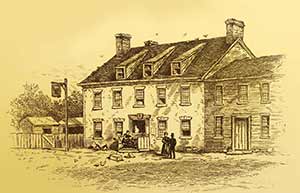
In 1785, the Bull’s Head Tavern and its adjacent stockyard were bought by Heinrich Ashdore. A butcher by trade, this German immigrant changed his name to Henry Astor. He and especially his brother John Jacob Astor — who made a fortune as a furrier — would become land barons on the Bowery and one of the richest families in America. John Jacob is the namesake of the Astor Place subway station.
NYC’s Most Architecturally Diverse Streetscape !
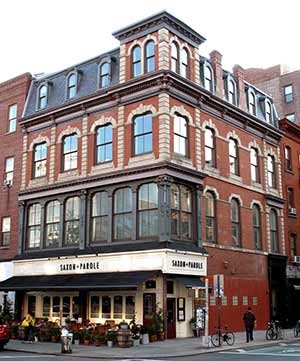
The Italianate 316-318 Bowery (1868)
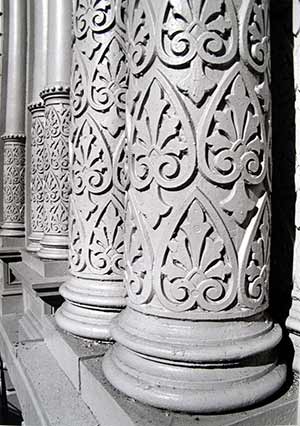
Detail, 330 Bowery (1874)
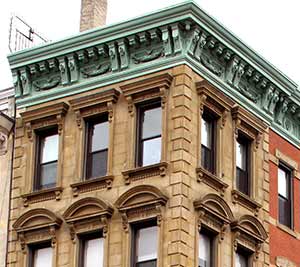
Italian Renaissance bank building, 215 Bowery (1872)
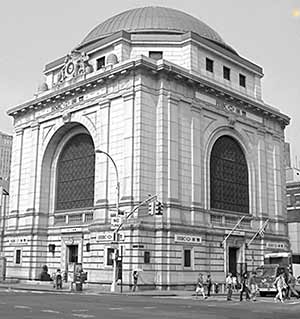
The Beaux-Arts bank, 58 Bowery (1922)
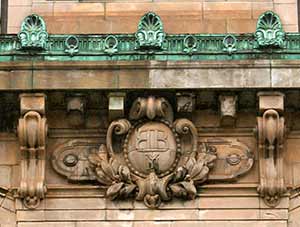
Detail from Bowery Bank, 124 Bowery (1902)
Stretching 1.5 miles from Chatham Square to Cooper Square, the Bowery is New York City’s oldest thoroughfare. As architectural historian Kerri Culhane writes in the National Register of Historic Places’ Bowery document, while most Manhattan districts developed within a short period of time, the Bowery developed over 400 years of Euro-American history, with buildings and styles representing every decade from the 1780s to the present. Throughout the length of the Bowery,
Culhane writes, there is no correlation between geography and age of building: The Bowery is uniformly irregular and therefore unique.
The city’s most diverse architectural streetscape, building styles include Georgian/strong>, Federal, Greek Revival, Italianate, Victorian, Neo Grec, Queen Anne, Beaux Arts, and Art Deco.
Source: Bowery Historic District / National Register of Historic Places: #13000027 2013.
The architectural legacy of the street includes some of Manhattan’s earliest surviving townhouses, nineteenth and twentieth-century commercial buildings, lodging houses, saloons, social services buildings and banks. Among the most architecturally and historically diverse streets in the city, buildings along the Bowery date from nearly every decade between ca. 1785 and the present, both residential and commercial: warehouse by flophouse, bank by union hall, theater by tenement and townhouse, whorehouse and saloon. Perhaps most significantly, the Bowery is an indispensible resource of two centuries of American social, economic, political, immigrant, labor, underground, criminal, deviant, marginal, counter-culture, literary, musical, dramatic and artistic history.—Kerri Culhane, Architectural Historian
NYC’s Oldest Brick House !
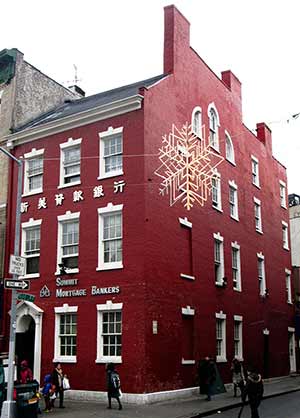
Edward Mooney House in 2013 18 Bowery, built 1785.
The Edward Mooney House is New York City’s oldest brick house. Built in 1785, it combines elements of both the pre-Revolutionary Georgian and the in-coming Federal style. In addition to being a breeder of horses, Mooney was a butcher, a trade closely associated with the lower Bowery during that era.
In the early 1900s, the roughneck Barney Flynn’s Saloon was located here.It was headquarters of Chuck Connors, a local character and self-described Mayor of Chinatown,
who led slumming tours through Bowery dives
and supposed Chinatown opium dens.
A Stanford White Masterpiece !
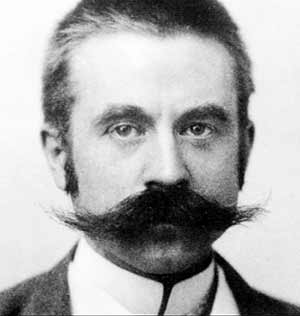
Stanford White, 1892
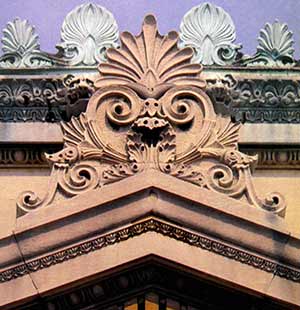
130 Bowery detail
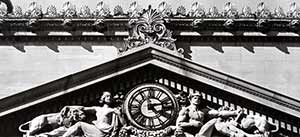
Bowery Savings Bank detail
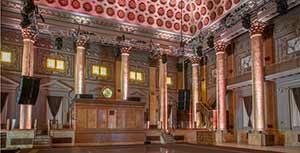
The Bowery Savings Bank was designed in 1894 by Stanford White of the famed architectural firm McKim, Mead & White. This monumental Classical Revival bank is one of the first buildings to herald the new classicism popularized by Chicago’s 1893 World’s Columbian Exposition. Unable to secure the adjacent corner lot on Grand St., it was designed L-shaped fashion, with ornate entrances on both streets.
The Indiana Limestone and granite bank features a neo-Roman temple frontage on Bowery with massive Corinthian columns and a triumphal arch with a deep, coffered barrel vault. The central pediment’s clock is flanked by reclining classical figures and lions. The Grand Street façade has a sculpted pediment raised on Corinthian columns. Pediment sculptures are by Frederick MacMonnies., the Beaux Art sculptor used by White for many of his buildings. – Mitchell Grubler, Landmarks Committee Chair, Bowery Alliance of Neighbors
This exterior and interior designated NYC landmark is now Capitale, an event venue.
Exterior and interior of the Bowery Savings Bank.
Its Imperial Roman temple front became the standard for civic buildings in the United States. — Samuel G. and Elizabeth White, McKim, Mead, and White in The Masterworks.
Manhattan’s First Free Black Settlement !
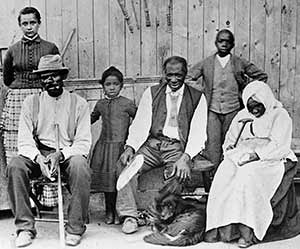
Between 1643 and 1651, manumitted Africans, former slaves of the Dutch West India Company, received ground briefs for land in the area between the public wagon road [the Bowery] and the Fresh Water [Collect] and vicinity, in what Stokes describes as the The ground-briefs for small farms, offered by director-general Kieft, appear to have been offered strategically: First, the recipients were older slaves, reaching the end of their productive lives, and through manumission the company could avoid the expense of caring for them; Secondly, the African settlement would provide a buffer and early warning system against Native American attacks on Dutch settlements in town, farther south.
Among the recipients of the grants were:
These elder Africans, many of whom had arrived in 1625 and 26 to build the Dutch settlement, were granted a conditional freedom: an annual tribute of grain, produce, and hogs was owed to the company, along with a promise to labor for wages when asked. Their children, younger and presumably more fit to undertake the most strenuous labor, remained enslaved. These farms and small grants were interspersed among the boweries [farms] and estates of some of the most powerful Dutch landowners of New Amsterdam.
Source: Kerri Culhane — Bowery Historic District / National Register of Historic Places: #13000027 2013.
first quarter for free negroes established on Manhattan Island.
Lincoln’s Famous Anti-Slavery Speech at Cooper Union !
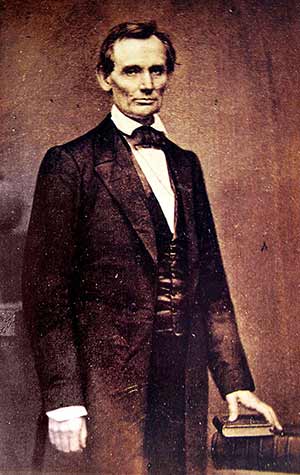
Abraham Lincoln at Cooper Union
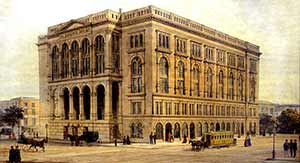
Cooper Union circa 1860s
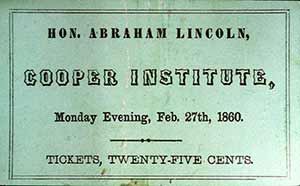
Ticket to Lincoln's Cooper Union Speech
Abraham Lincoln’s anti-slavery Right Makes Might
speech, delivered at Cooper Union’s Great Hall on February 27, 1860, helped propel him to the presidency. Equally helpful in that quest was the widely circulated photograph that Matthew Brady took of him on the same day.
Brady and the Cooper Union made me president of the United States.— Lincoln
Lincoln's speech is as follows:
Mr. President and fellow citizens of New York: -
The facts with which I shall deal this evening are mainly old and familiar; nor is there anything new in the general use I shall make of them. If there shall be any novelty, it will be in the mode of presenting the facts, and the inferences and observations following that presentation.
In his speech last autumn, at Columbus, Ohio, as reported in "The New-York Times," Senator Douglas said:
"Our fathers, when they framed the Government under which we live, understood this question just as well, and even better, than we do now."
Read the rest of Lincoln's speech.
Stomping Ground for Immigrants & the Working Class !
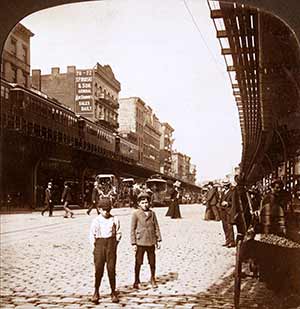
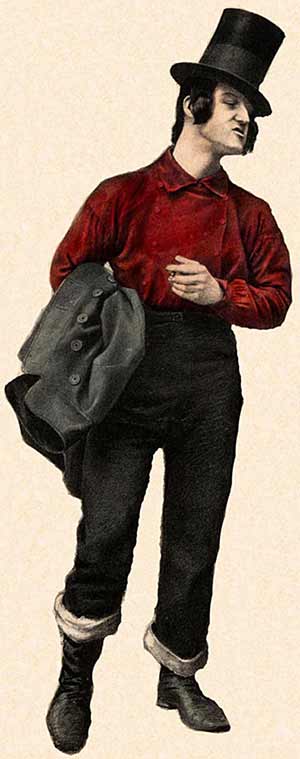
Actor Frank Chanfrau as Mose, the firefighting Bowery Boy
The Bowery was a 19th century stomping ground for the working class, the Bowery Boys gang, gay New Yorkers and waves of Irish, Italian, Chinese, German and Jewish immigrants.
— Kerri Culhane, Architectural Historian
America’s First Streetcars !
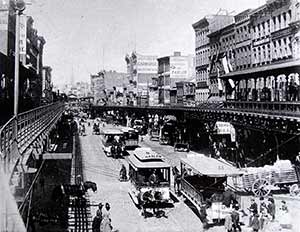
The Bowery North from Canal circa 1888

Postage Stamp celebrating Americas First Street Car, 1832
America’s first streetcars, which were horse-drawn, began runs on Bowery between Prince and 14th Street in 1832. This was the initial stretch of the New York & Harlem Line.
Social/Commercial Hub of Kleindeutschland
!
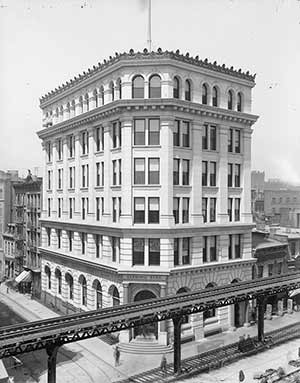
Germania Bank Building at 190 Bowery (Built 1898-9) 50 Bowery Germania Bank Building (built 1898-9)
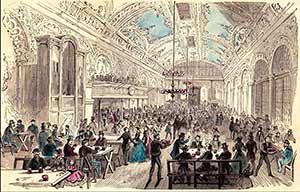
Atlantic Garden, at 48 Bowery, was the era’s most famous beer garden (1858-1915)
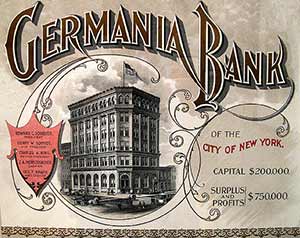
Germania Advertisement 1899
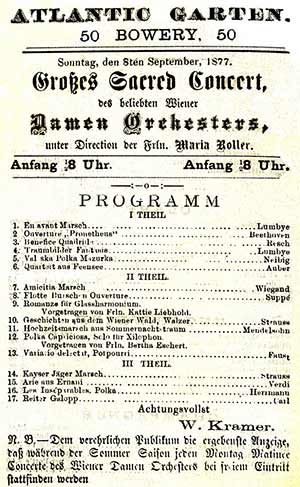
Atlantic Garden Sacred Concert Program Sept 1877
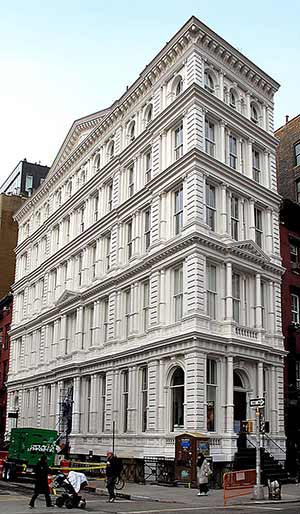
Bouwerie Lane Theatre Building (1874) at 330
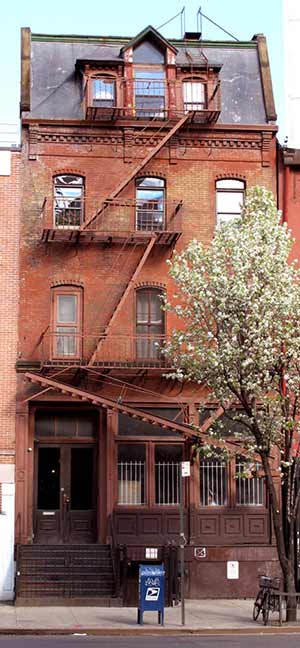
Germania Fire
The Bowery was once the social and financial hub of Kleindeutschland—“Little Germany”—the 19th century’s most prominent German-American neighborhood. Fleeing economic and political instability, Germans began immigrating here in the 1840s, and by 1855 New York contained the third largest urban population of Germans in the world. By 1870, Little Germany covered much of the present-day East Village and Lower East Side.
Some of the Bowery’s most stately landmarks, such as the Germania Bank Building at 190, the Bouwerie Lane Theatre at 330 and the Germania Fire Insurance Building at 357 Bowery, survive as beautiful reminders of its heyday. Others, like the popular Atlantic Garden beer hall at 50 Bowery and the majestic, glass-domed German Winter Garden at 43 Bowery have sadly passed into legend.
After the 1904 General Slocum disaster, in which a fire on an excursion steamship killed over one thousand people, most of them women and children, Germans began leaving Kleindeutschland for other areas.
Source: David Freeland, Historian, author Automats, Taxi Dances & Vaudeville.
Germans And Kleindeutschland
In Germany, overpopulation, industrialization, land scarcity, and the unification of the German economy forced regional artisans into competition with each other and with industrial production of Germany and England. A failed revolution of 1848, cheaper transport, and encouragement from previous immigrants induced Germans to immigrate in great numbers to the U.S. When food prices in Germany rose in face of the potato blight, it was most acutely felt in southwestern Germany, the region that sent greatest number of immigrants to the U.S. In the peak year of immigration, 1854, more Germans arrived in U.S. than Irish.
With the Bowery as one of its main streets, Kleindeutschland (Little Germany) grew into a major center of German immigrant culture between the 1850s and 1900. By the mid 1850s, Kleindeutschland sprawled across the 10th, 11th, and 17th Wards east of the Bowery. The Bowery formed the western boundary of the 10th & 17th Wards.
The old Bowery Amphitheatre (37-9 Bowery, now the location of Confucius Plaza) in business since the 1830s, was converted to the Stadt Theatre in 1854, one of an emerging cluster of German-language stages and places of entertainment in this part of the Bowery. The Stadt Theatre became well-known for its presentation of high culture: Mozart opera performances, the American debut of the German tenor Wachtel, and the first US productions of
Otto von Hoym opened Hoym’s Theatre at 199-201 Bowery in 1858. Hoym bills included ballet, Shakespeare, and variety entertainment. The Volksgarten (45 Bowery) and Odeon Theatre (49 Bowery), two lager-bier saloons presenting theatrical entertainments,
caught fire in December 1858, but were soon rebuilt. The Volksgarten became an important gathering place for political meetings. In November 1861, Mayor Fernando Wood addressed pro-Wood rally sponsored by the German Democratic Club. His speech focused on immigrant and naturalized citizen rights, and Sabbath laws, particularly onerous to Germans who enjoyed relaxing with a beer on Sundays.
Atlantic Garden
What would become the most celebrated and long-lived biergarten and concert hall, the Atlantic Garden opened directly across the street from the Stadt, Volksgarten and Odeon in 1858. When William Kramer opened the Atlantic Garden at 50 Bowery, it quickly became the center of upper middle class German social life. Reportedly capable of entertaining 2,000 people at a time on its two floors, throughout most of its 52 years in business, it was considered thea center for the German life of the city.
SourceText researched and written by architectural historian Kerri Culhane
Excerpt from: Bowery Historic District Section 8 Page 29-30. / National Register of Historic Places: #13000027 2013.
NYC’s First Entertainment District !
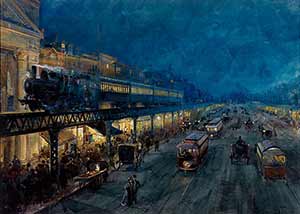
The Bowery at Night, painting by Louis W. Sonntag, 1895
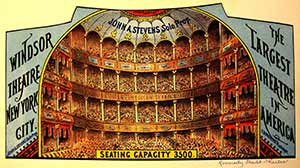
Bowery Windsor Theatre
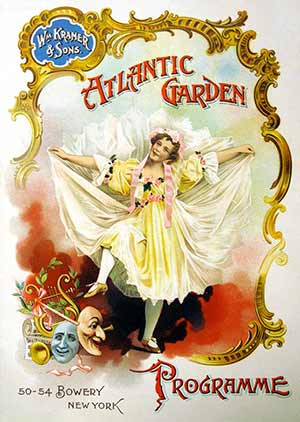
Atlantic Garden Programme Cover
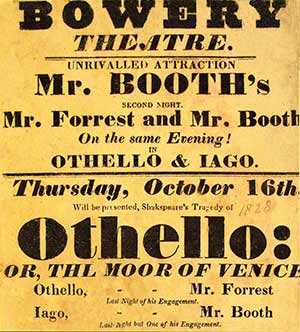
Bowery Theatre Poster
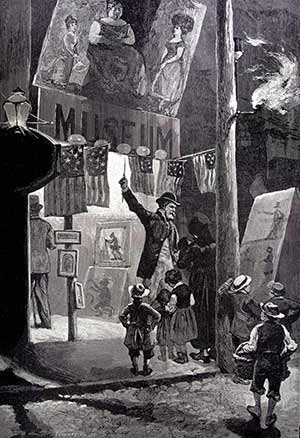
Outside a Dime Museum, Harpers Weekly Feb 26, 1881.
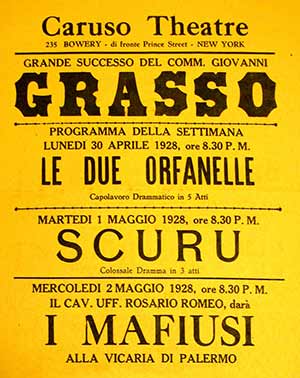
Caruso Theater Poster
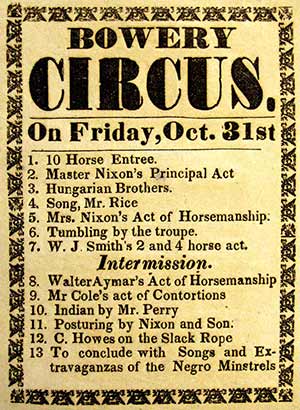
Bowery Circus at 37-39 Bowery, 1845
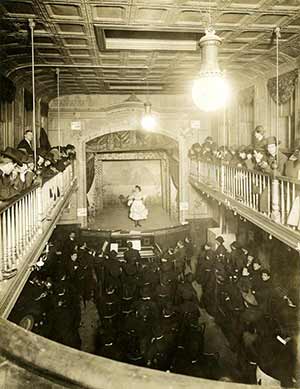
A Refined Singing & Dancing Act and a Scuttle of Suds in a Bowery Concert Hall.
While there had been other NYC theatres, the stately Bowery Theatre in 1826 helped establish the street as the city’s first entertainment district. Though built to attract the elite, as the wealthy moved north, this 3,000 seat theatre began catering to the working class, with visceral productions of Shakespeare and blood-and-thunder melodramas. According to historian Kerri Culhane, during the pre-Civil War era The street was becoming known as the center of amusement, a place for sight-seeing, people-watching, gambling, drinking. During the 1830s, the Bowery was emerging as the Main Street of the working classes.
In addition to its large theaters, the 19th century Bowery would eventually be lined with concert saloons, vaudeville houses, dime museums, and beer gardens like the family-friendly Atlantic Garden, which was famous for its ladies orchestra. A red light district, sailors and sporting men came for its gambling, shooting galleries, tattoo parlors, brothels and boxing saloons. The street itself was festive, with corn and oyster venders, street singers and brass bands, magicians, flashy dressers, and a cacophony of languages and accents. Among the first streets to receive electricity, the effect was said to be dazzling, as one commentator wrote in 1882:
To see the Bowery in its glory, one must visit it at night. It is a blaze of light from one end to the other.James D.McCabe,
New York by Sunlight and Gaslight
One of the few American streets with International name recognition, this exotic, gritty street was a must-see destination for tourists and local slumming
parties. Small wonder that writer Stephen Crane pronounced it the most interesting place in New York.
During its 19th century heyday, the Bowery had a seminal connection to tap dance, minstrelsy, Yiddish theater, and our first two great songwriters — Stephen Foster and Irving Berlin. Vaudeville’s roots are here, including the first use of the infamous vaudeville hook — a long shepherd’s crook used to pull offstage an unpopular performer. The Bowery saw one of America’s earliest zoos and some of its earliest circuses. America’s first baseball club — the Gothams — was based here. America caught its first scandalized glimpse of ballet and their first delighted listen to Sidewalks of New York
here. Works of Mozart and Wagner had their American premieres on the Bowery, and early Chinese and Italian opera companies performed here. There was also the Great Hall at Cooper Union, that great bastion of free speech where one could see and hear Abraham Lincoln, Frederick Douglass, Chief Red Cloud, Susan B. Anthony, Andrew Carnegie, Nikola Tesla, Mark Twain, Eugene Debs and Emma Goldman.
Whether on their way up or on their way down, many of the era’s greatest performing arts figures worked and/or lived on the Bowery: Stephen Foster, Irving Berlin, Harrigan & Hart (American musical comedy pioneers), James O’Neill (Eugene O’Neill’s father), Junius Brutus Booth (father of Edwin & John Wlkes), Charlotte Cushman, the notorious Lola Montez, the Great Lion Tamer
Isaac Amburgh, Al Jolson, Eddie Cantor, Buffalo Bill, W. C. Fields and magicians Herrmann the Great and Harry Houdini.
Long before Broadway broke the color bar, African American performers like tap dance pioneer William Henry “Master Juba” Lane and comedian Billy Kersands appeared on the Bowery.
Unlike today’s uber-expensive Broadway theaters, which are the near exclusive domain of tourists and the rich, the Bowery’s theatres — even elegant ones like the 3,000 seat Bowery Theatre and the 3,500 seat Windsor Theatre — were affordable to and regularly attended by the working class.
Bowery Theatre Was America’s Largest !
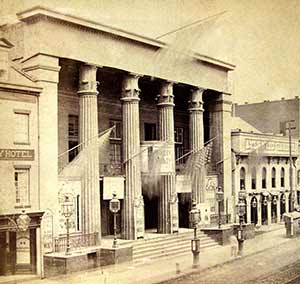
3,000 Seat Bowery Theatre Was America’s Largest!
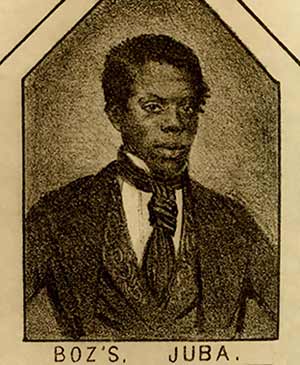
William Henry Lane (1825-1852) Dickens called him the greatest dancer known.
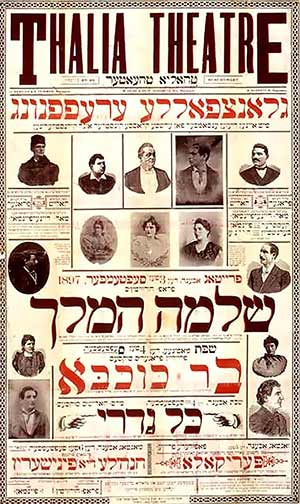
Poster from 1897 Yiddish production. The theatre was called Thalia from 1879 to 1929.
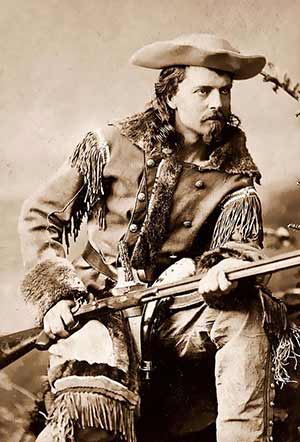
William “Buffalo Bill” Cody, 1880
As pretty a theatre as ever I entered — Mrs. Frances Trollope, English visitor
The 3000-seat Bowery Theater opened here in 1826 as America’s largest theatre. The first gaslit theatre, its massive stage used fire and water effects, and held horses for battle scenes. Its Roman temple exterior hoped to lure the genteel elite, but its pit and upper tiers were soon filled by the area’s working class, who flocked to see Shakespeare, melodrama, comedy and song. Walt Whitman fondly remembered presidents being seated beside mechanics and tradesmen.
Legendary appearances included Junius Brutus Booth (father of Edwin & John Wilkes), Charlotte Cushman, Dan Rice, Buffalo Bill (1st stage appearance), Frank Chanfrau (as Mose, the Bowery Boy), Edwin Forrest, James O’Neill (Eugene’s father), anarchist Emma Goldman, the notorious Lola Montez, magician J.H. Anderson, and Bertha Kalich as Hamlet. In 1827, Madame Francisque Hutin scandalized Americans with their first glimpse of ballet.
African American William Henry Lane — the King of all Dancers — electrified audiences with a fusion of the African American shuffle and the Irish jig, worked out from challenge dances in the Five Points ghetto. In addition to appearances by Black performers, and many productions of the anti-slavery play, Uncle Tom’s Cabin, this theatre also launched T.D. Rice’s phenomenally successful Jump Jim Crow
act, which mimicked Southern Black song and dance. Rice’s Jim Crow inspired the institution of blackface minstrel troupes, and became the namesake for the oppressive racial segregation laws after the Civil War.
Opening in 1826 with the aptly-titled The Road to Ruin, this unluckiest of theaters,
burned six times, but survived 103 years by catering to changing demographics—Germans, Jews, Irish, Italians and Chinese. It closed for good in 1929.
Source: Mick Moloney & Lenwood Sloan, authors of Two Roads Diverged: African and Irish Americans and the Rise of American Popular Culture
Birthplace of Vaudeville !
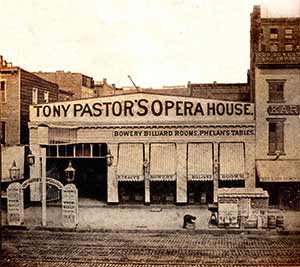
Vaudeville was born at Tony Pastor’s Opera House 199-201 Bowery.
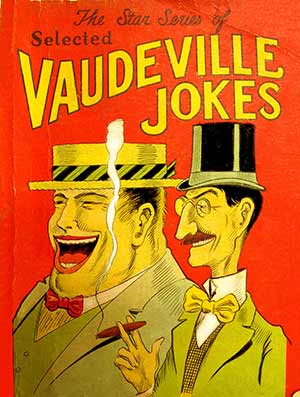
Vaudeville Joke Book
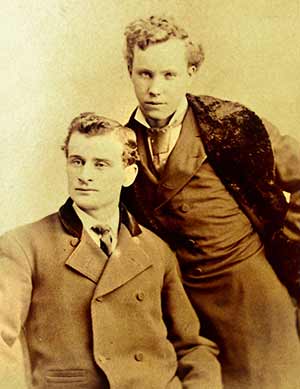
NedHarrigan & Tony Hart
Performer/theatrical impresario Antonio Tony
Pastor (1832-1908) is widely considered to be the Father of vaudeville, the popular theatrical format that included a dozen acts in a single show with everything from singing, dancing and comedy to acrobatics, juggling, and magic. Though variety theater had existed before vaudeville, it was widely associated with raunchy shows and inebriated, mostly male spectators.
Pastor is credited as the man who cleaned up variety and broadened its appeal by expelling the drunken rowdies and advertising shows as suitable for women and children. His first important venture, Tony Pastor’s Opera House at 199-201 Bowery, opened in 1865 and advertised itself as the The Great Family Resort.
Prominent acts presented there included singer/dancer/comedian Pat Rooney, and Harrigan and Hart, the Fathers of American Musical Comedy.
Read vaudeville historian Trav S. D.’s profile of Tony Pastor
Yiddish Theater’s First American home !
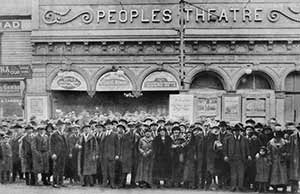
Peoples Yiddish Theater 1925.
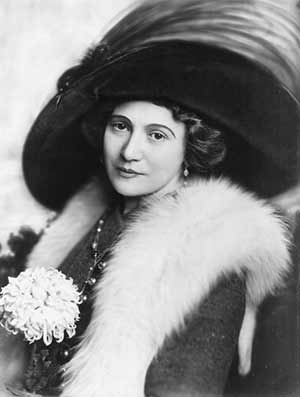
Bertha Kalich 1910 Publicity Shot
Though it originated in the Jewish communities of Central and Eastern Europe in the 1870s, Yiddish theatre’s first American home was on the Bowery beginning in the 1880s. Performed in the Yiddish language, plays included both comedies and drama, many incorporating music and singing.
Popular peformers included Boris and Bessie Thomashefsky, Jacob and Sara Adler, and Bertha Kalich. Major Yiddish theaters on the Bowery included the People’s Theatre (199-201 Bowery), the Thalia Theatre (46-48 Bowery), and Max Gabel’s Theatre (235 Bowery).
America’s First Two Great Songwriters !
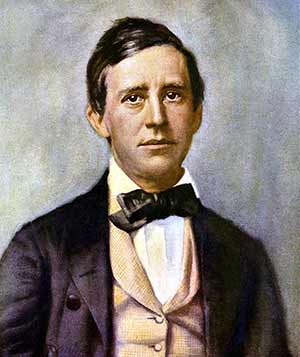
Stephen Foster, 1826-1864
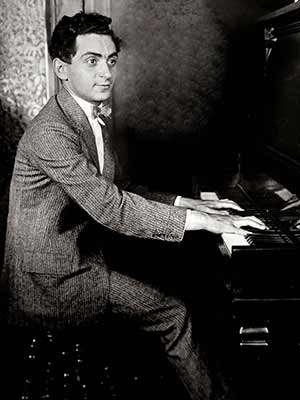
Irving Berlin, 1888-1989
Though their careers were half a century apart, America’s first two great songwriters — Stephen Foster and Irving Berlin — lived and worked on the Bowery, a teenaged Berlin writing his first song and Foster his last at locations a mere one block from each other.
Stephen Foster penned such iconic American songs as Camptown Races, My Old Kentucky Home, Beautiful Dreamer, Jeanie with the Light Brown Hair and Hard Times Come Again No More, many of them written for the minstrel stage and performed in the theatres and concert saloons that lined the Bowery. According to musicologist Mick Moloney, His Oh Susanna forever changed the history of American popular song, selling over 100,000 copies at a time when the previous best selling song had sold no more than 5000 copies.
Despite the popularity of his songs, Foster did not have a good business sense and received precious little for his many best-selling songs. An alcoholic, he spent his last days and wrote his last song at the New England Hotel at 30 Bowery (corner Bayard Street). When he died there at age 37 in 1864, his estate was worth less than one dollar.
Raised on the Lower East Side, Russian-born Izzy Baline ran away from home at age 13 to avoid the sweatshop misery that had trapped his siblings. Initially working as a newsboy and living on the street and in Bowery flophouses, the musically gifted son of a cantor sought work as a singer, dropping into dives like Bucket of Blood and McGurk’s Suicide Hall and singing for pennies. I got my musical education in the Bowery,
he later remembered. His luck began to change when he met local character Chuck Connors — the self-described White Mayor of Chinatown
— at Barney Flynn’s Saloon (18 Bowery). Recognizing the kid’s talent, Connors helped get Izzy a singing waiter job around the corner at the Pelham Café at 12 Pell Street. It was here, at age 19, that he wrote his first song, Marie From Sunny Italy. Changing his name to Irving Berlin, he would go on to pen Cheek to Cheek,” Blue Skies, Always, God Bless America, and White Christmas.
Five Spot Cafe was the Hippest Place on Earth
!
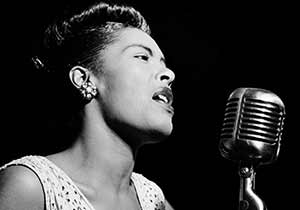
Billie Holiday sang here during her final years.
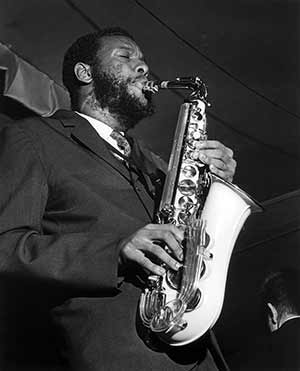
Ornette Coleman introduced free improvisational jazz
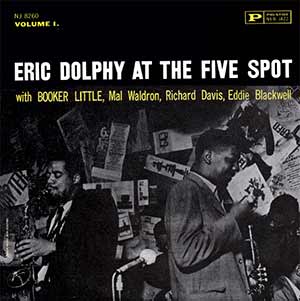
Eric Dolphy at the 5 Spot Long Playing Recording (LP)
For a brief period in the 1950s and 60s, the Five Spot Café was the hippest place on Earth.
Located at 5 Cooper Square, it was owned by brothers Joe and Iggy Termini, who brought in the
era’s most progressive jazz artists, including Thelonious Monk, Cecil Taylor, Eric Dolphy, Charles Mingus, Randy Weston and John Coltrane.
Some of Billie Holiday’s last performances took place here. Because the authorities had seized her cabaret card, the engagements could not be publicized, but the club filled up by word of mouth alone.
In 1959, saxophonist Ornette Coleman’s Five Spot debut introduced free improvisation to mainstream jazz discourse. Although composer Leonard Bernstein visited one night and loudly declared it the greatest thing that has ever happened in jazz,
Coleman’s music remains controversial to the present day.
The New York destination for bohemians and visiting intelligentsia, Five Spot regulars included painter Robert Rauschenberg, poets Ted Joans and Amiri Baraka, and novelists Jack Kerouac and James Baldwin. During the club’s existence, whether as listeners or as performers, the most adventurous artists of the time came through the Five Spot’s doors. In 1963, the club moved to Two St. Mark’s Place @ Cooper Square, where it lasted until the early 1970s.
Source: David Neil Lee, The Battle of the Five Spot
Cinema’s most famous seduction line !
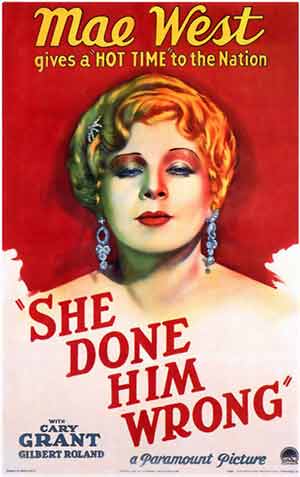
She Done Him Wrong Movie Poster
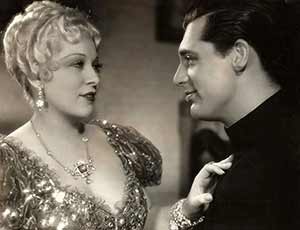
Mae West and Cary Grant in She Done Him Wrong.
The screen’s most famous seduction line was when Bowery showgirl Mae West told the supposed mission worker Cary Grant to come up and see her sometime in 1933’s She Done Him Wrong. The script, which West adapted from her hit Broadway play, Diamond Lil, was a funny but racy homage to the 1890s Bowery that West fondly remembered from her youth. To throw off the censors, who were sure to reject a film based on her licentious play, Paramount changed the title, and Diamond Lil became Lady Lou. Chock full of sexy songs and hilarious zingers, the film was a smash hit that saved the studio from bankruptcy, but alienated the Catholic Legion of Decency and helped bring on the strict 1934 Production Code which would regulate and sanitize movie content for the next several decades.
For the record, that famous line is actually worded a bit differently.
See and hear the scene below.
NYC’s First Community Garden !
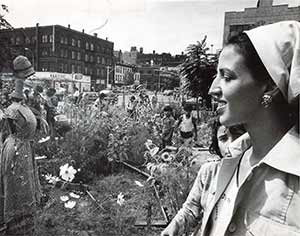
Liz Christy In her Garden 1970s
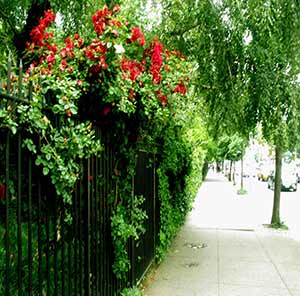
Liz Christy's Garden Today

Liz Christy's Garden
In 1973, artist Liz Christy and her band of volunteers transformed a vacant lot at [what site] site to create the Bowery-Houston Community Farm and Garden. Her Green Guerillas cleared garbage, built soil from police-stable manure, and planted trees, flowers, and vegetables. More than 600 community gardens now grace New York City neighborhoods.
Generations of volunteer gardeners have enhanced the design, recruited members, and opened this garden to the public weekends and some evenings. In 2004, the garden faced an existential threat from the development of surrounding lots by AvalonBay. Thanks to action from garden members, the community, city officials and the Parks Department, the garden not only survived but was expanded to Second Avenue. The Liz Christy Garden is famous worldwide for its beauty as well as its unlikely formation. With its dedicated, all-volunteer membership, it continues to prosper even as the neighborhood changes.
Click for hours and info.
Birthplace of Modern Tattooing !
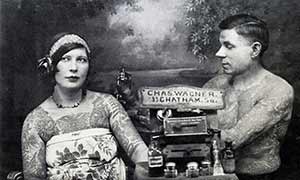
Samuel O’Reilly & Charlie Wagner at Chatham Square & Bowery
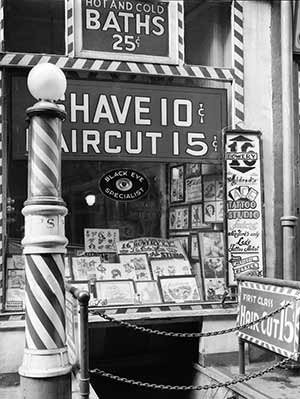
Mildred's Ace Tattoo Studio
As a stomping ground for sailors and sporting men, the Bowery/Chatham Square was an appropriate location for Samuel O’Reilly and Charlie Wagner, the fathers of modern tattooing. O’Reilly, who patented the first electric tattooing machine in 1891, made a name for himself at 11 Chatham Square, as did his student Wagner, who took over when O’Reilly died in 1908. Known as the Michelangelo of tattoo,
he patented his own tattoo machine in 1904 featuring the same alignment many machines use today. Wagner also rented space at 208 and 223 Bowery, but worked 11 Chatham Square until his death in 1953.
Other Bowery tattoo artists, some Wagner protégés, included Willie Moskowitz & Al Neville (4, 12 Bowery), Lame Leroy (15 Bowery), Apache Harry (22 Bowery), and Moskowitz’s sons, Stanley & Walter (52 Bowery). The most unique was Mildred Hull, New York’s only lady tattooist.
Raised on the Bowery, Millie was an exotic circus dancer when Wagner started tattooing her and taught her his craft. Her Tattoo Emporium opened in 1939 inside a barber shop at 16 Bowery.
Tattooers worked the Bowery until NYC banned tattooing in 1961. It wasn’t re-legalized until 1997.
Source: Michelle Myles, visit the Tattoo Museum, 141 Division Street.
Birthplace of Punk Rock !
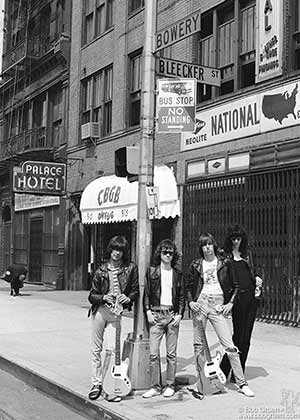
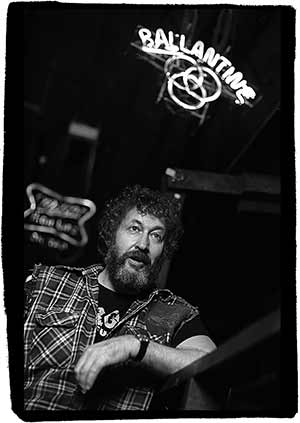
Hilly Kristal
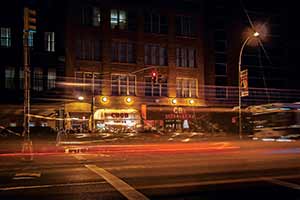
CBGB's Last Day
315 Bowery is the former site of CBGB – the legendary birthplace of punk rock. A grungy and chaotic laboratory of musical innovation, it witnessed early performances by The Ramones, Patti Smith, Talking Heads, Television, Richard Hell, Blondie, The Police, Dead Boys, Joan Jett, Lou Reed, AC/DC, the B-52s, Alan Jackson, Green Day, Guns ‘n Roses, and Pearl Jam.
CBGB was the brainchild of Hilly Kristal (1931-2007), a former marine who played violin and guitar, sang at Radio City Music Hall and managed the Village Vanguard before starting the Rheingold Central Park Music Festival and opening Hilly’s on 9th Street. In 1973, he opened CBGB, intending to book Country/BlueGrass/Blues, but drifted into rock. OMFUG means Other Music for Uplifting Gormandizers. Sacrificing all to make his vision a reality, he took odd jobs to make ends meet. He rejected cover music, stressing instead a nurturing commitment to new songs and new bands.
Despite a high profile campaign to save the club after a protracted legal dispute with Hilly’s landlord, CBGB closed on October 15, 2006. Battling cancer, he died in 2007. Patti Smith wrote, Hilly Kristal was the good shepherd of a flock of black sheep. We are forever grateful.
Bowery Rescue Missions Have Sheltered Millions !
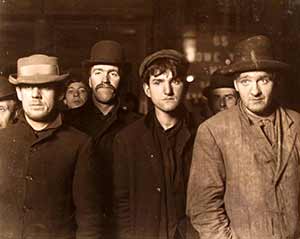
Midnight at Bowery Mission Breadline at 2AM 1909
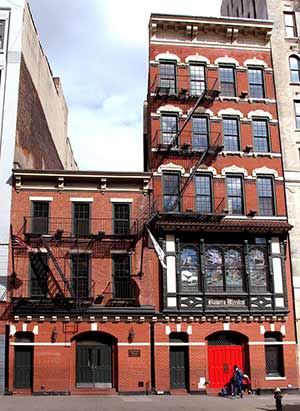
The taller structure became a NYC Landmark in 2012
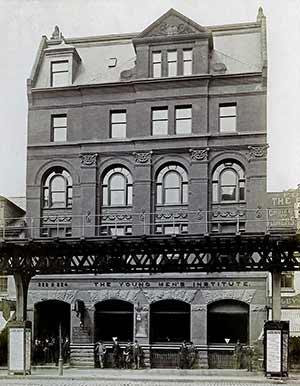
Young Men’s Institute building is a NYC Landmark. Since the 1940s, it has been a live/work space for artists like Fernand Leger, Mark Rothko and William Burroughs.
Established in 1879 by Reverend and Mrs. A.G. Ruliffson, the Bowery Mission was located at 14, 36, 55 and 105 Bowery before moving to 227 Bowery in 1909, an event heralded by a visit and speech by President Taft. The Mission expanded into 229 Bowery in 1980, and has operated women’s homes and a summer camp for kids since the 1990s.
For nearly 140 years, the Bowery Mission has provided food, shelter, clothing, job opportunities, medical assistance and rehabilitation for millions.
Since 1872, the YMCA has maintained rescue missions at 134, 153, 243 Bowery, and an enormous facility at 3rd Street just off Bowery. In 1885, they opened the Young Men’s Institute at 222 Bowery. Unlike the rescue missions, which dealt with the fallen, the Institute stressed prevention, with fitness, athletics and vocational classes meant to divert young men from the Bowery’s typical lures of drinking, gambling and prostitution. In addition to a gym, bowling alley, library and rooftop garden, the Institute offered a lecture series featuring speakers like Henry Ward Beecher and Theodore Roosevelt.
While the Bowery Mission, YMCA and Salvation Army have maintained the most visible presence on the Bowery, the street’s longstanding repute as a vice district made it a magnet for church groups and social reformers from as far back as the early 19th century.
Though gentrification has erased most of these institutions, the Bowery Mission continues to serve, as do Project Renewal (333 Bowery) and the Bowery Residents Committee (317 Bowery). During the hardest of times, no American street has provided more food, shelter and uplift to the millions of homeless than the Bowery.
A Live/Work Community for Artists Since the 1940s !

Photo: Debbie Harry at CBGB
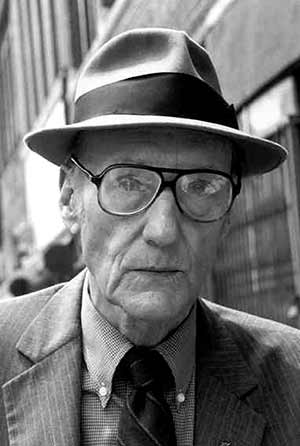
William Burroughs
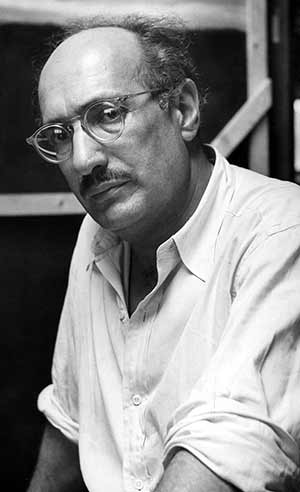
Mark Rothko
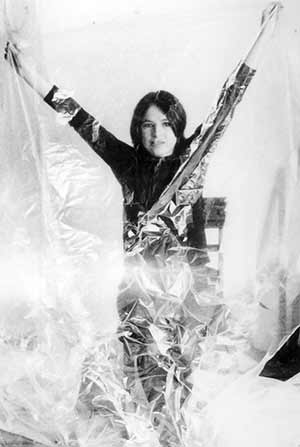
Eva Hesse in her home/studio at 134 Bowery, circa 1967.
Despite the Bowery’s ill-repute as a district of dive bars and flop houses, in the mid-20th century, it was still an important, affordable district for jewelry, lighting and restaurant supplies. Though its glory days as an entertainment mecca were long past, its cheap real estate values and laws legalizing artists lofts helped the Bowery re-emerge as an important live/work space for some of the era’s most influential artists, fostering Abstract Expressionism, Beat literature, improvisational jazz, the Black Arts Movement and the birth of punk rock.
Those who have lived and worked here during the past half century have included artists Fernand Leger, Eva Hesse, Mark Rothko, Roy Lichtenstein and James Rosenquist; architect Maya Lin; clothing designer Patricia Field; choreographer Ping Chong; photographers Robert Frank, Stephanie Chernikowski, Nan Goldin and Jay Maisel; filmmakers Martin Scorsese and Jim Jarmusch; writers William Burroughs, Amiri Baraka, Diane DiPrima, Kate Millet, Hettie Jones and John Giorno; and musicians Philip Glass and Debbie Harry. For expansive listing of Bowery artists, see the New Museum’s Bowery Artists Tribute
For further info on the legalization of artist lofts: Kerri Culhane, Bowery Historic District / National Register of Historic Places #13000027 2013.
Having grown up on Elizabeth Street, the neighborhood and residents of the Bowery became clear catalysts for turning me into a storyteller. Whether it’s Mean Streets or Gangs of New York, the influence of The Bowery – the grittiness, the ambience, the vivid atmosphere – is apparent. — Martin Scorsese, 2013 Letter to City Planning Commission.
NYC’s Oldest Continuously Operating Hotel
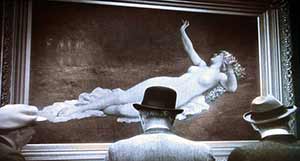
This painting of Mae West which appears in She Done Him Wrong, was supposedly inspired by the famous nude in the Occidental’s bar. Observing customers lusting after it, West quips, Yeah, I got to admit that is a flash, but I do wish Gus hadn't hung it up over the free lunch.
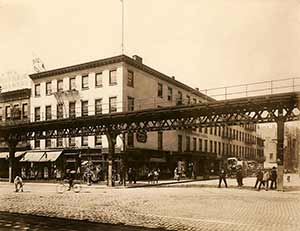
Occidental Hotel, circa 1900
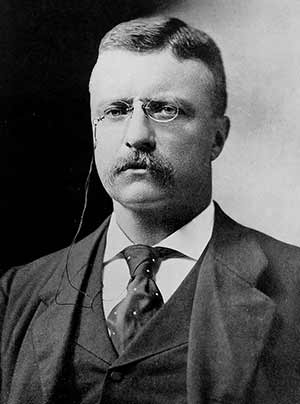
Theodore Roosevelt, 1858-1919
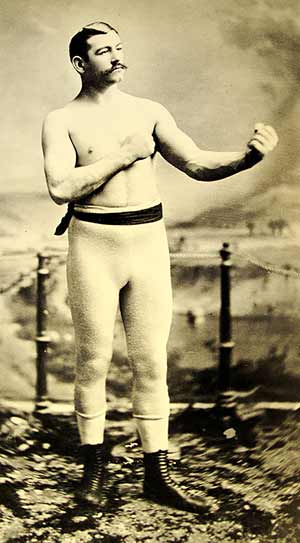
John L. Sullivan, 1858-1918
Though it has undergone countless renovations and name changes over the years, it is believed to be the oldest continuously operating hotel in New York City, welcoming guests since at least 1835.
According to the classic book, Old Bowery Days, published in 1931, the building originally housed a tavern known as New Bull’s Head, dating to 1805. Between 1825 and 1830, it was the Bowery House and by 1835, the Military and Civic Hotel. By the 1840s, it was the Westchester House – described as an On April 3, 1852, the infamous William The Occidental Hotel lost most of its prestige once Tim Sullivan passed away in 1913, and by the time the Great Depression hit in the 1930s, the building hosted cheap lodging under the names Commercial and Pioneer Hotel. Still going strong, it is currently known as the SoHotel.
Source: Eric Ferrara, author of The Bowery, Lower East Side History Project founder.
Old, dingy, yellow painted structure
in an 1875 memoir – before taking on the name Occidental Hotel in the mid 1870s.
The Occidental’s bar and restaurant was a hotspot for politicians, entertainers and sports figures through the early 20th century, serving boxing champions John L. Sullivan and James Jackson Jeffries, and political heavyweights like Teddy Roosevelt and Al Smith.
Boss
Tweed celebrated his 35th birthday here, and from 1900 to 1913, it served as both headquarters and residence to State Senator Big
Tim Sullivan.
Notorious Epicenter of Gay Nightlife in 1890s !
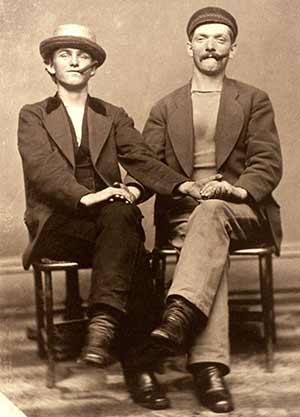
Two Working Class Friends 1875-1890
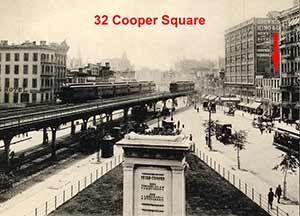
Cooper Square, looking south from Cooper Union, circa 1900
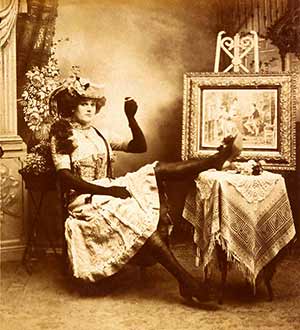
The Bowery Queen. A drag performer circa 1890s

The Bowery Queen. A drag performer circa 1890s
It has been estimated that in the 1890s—before morals crusaders closed them down--the Bowery area was home to a dozen gay friendly nightspots, many centered around Cooper Square. Historian George Chauncey has suggested that a gay subculture could emerge on the Bowery because its diverse mix of people and dense concentration of theatres, saloons and red light elements made it more tolerant of those outside the cultural mainstream.
The most notorious of the clubs was Columbia Hall — better known as Paresis Hall — which was located at 392 Bowery (32 Cooper Square), and was considered by anti-vice forces as the principal resort in New York for degenerates. Run by gangster James T. “Biff” Ellison, it was famous for its drag shows, and supposedly operated a brothel. An upstairs space was rented to a club called Cercle Hermaphroditos,
which was formed to unite for defense against the world’s bitter persecution
of androgynous men. Historians Edwin Burrows and Mike Wallace credit this as one of America’s earliest efforts for gay rights.
Source: David Freeland, Historian, author Automats, Taxi Dances & Vaudeville
Further reading:
- Kerri Culhane. Bowery Historic District at NRHP
- George Chauncey, Gay New York: Gender, Urban Culture and the Making of the Gay Male World, 1890-1940 (NY: Harper Collins, 1994)
- Jonathan Katz, Gay American History: Lesbians and Gay Men in the U.S.A. (NY: Avon Books, 1978)
- Edwin G. Burrows & Mike Wallace, Gotham: A History of NYC to 1898 (NY: Oxford Univ. Press, 1998)
... is listed on the National Register of Historic Places?

National Register's BOWERY HISTORIC DISTRICT document prepared by Architectural Historian Kerri Culhane.

Bowery’s historic character, retail diversity, and long-term residents are threatened by real estate speculation and overdevelopment.
Shouldn’t the city’s oldest street — this incubator of American history and culture — be preserved and protected?
Allowing skyscrapers to populate the Bowery’s east side will not only generate an eyesore of ridiculous incongruence but also displace the very type of businesses and residents that constitute the Bowery’s main allure. — Keith McNally, restaurateur, Cherche Midi, 282 Bowery
Support for the East Bowery Preservation Plan
The lack of contextual zoning for the east side of Bowery has precipitated a wave of out-of-scale development which not only threatens the affordability of the area but changes the cultural, historical and architectural significance of the Bowery. The [East] Bowery Preservation Plan. . .calls for controlled, responsible development, including community facilities, while maintaining the low-rise character of the street and will promote the retention of mixed socio-economic populations, affordable housing, social services and artists’ live/work spaces. — City Council Member Rosie Mendez, 2012 Letter to City Planning
The Bowery and its east side are threatened with becoming a playground for developers . . . gigantic high-rise hotels and condos being built in the area create mid-block eyesores and ruin the flow and feel of the area . . . high rise development on the Bowery is pushing out local residents, many of whom have lived in the area for decades. — City Council Member Margaret Chin, 2009 Letter to City Planning
Two Bridges Neighborhood Council and the Bowery Alliance of Neighbors successfully co-sponsored the New York State Historic District designation of the Bowery to highlight and honor the area’s rich history. The District’s official listing in the National Register of Historic Places took place on Feb. 20, 2013.
Two Bridges Neighborhood Council and the Bowery Alliance of Neighbors co-sponsored the nomination of the Bowery to the National Register of Historic Places. The Bowery, stretching 1.25 miles from Chatham Square on the south toCooper Square on the north, is an iconicManhattan street. The city’s oldest thoroughfare, it is one of the few streets in the world whose name evokes meaning beyond just a location on the map. From its earliest history as a Native American trail, to its function as a colonial-era Dutch farm road and Post Road to Boston, to its role in fostering American entertainment and artistic genres as diverse as tap dance, minstrelsy, vaudeville, jazz, punk, abstract expressionism, and Beat poetry, the Bowery has played a central role in the cultural and physical development of Manhattan.
The architectural legacy of the street includes some of Manhattan’s earliest surviving townhouses, nineteenth and twentieth-century commercial buildings, lodging houses, saloons, social services buildings, and banks. Among the most architecturally and historically diverse streets in the city, buildings along the Bowery date from nearly every decade between ca. 1780 and the present.
Perhaps most significantly, the Bowery is an indispensable resource of two centuries of American social, economic, political, immigrant, labor, underground, criminal, deviant, marginal, counter-culture, literary, musical, dramatic and artistic history, and it is within the remarkable architectural catalogue of buildings that this history was made. Since 2004, Bowery Alliance of Neighbors has been a vocal advocate for the preservation and appreciation of the Bowery as one ofNew York’s most invaluable and irreplaceable historical and cultural resources. During that time, the Bowery has seen an explosion of large-scale development that negatively impacts it in a number of ways, including:
This project can serve as a catalyst, informing planning decisions on the Bowery that affect the many neighborhoods through which it runs. We advocate strongly for a comprehensive approach to community planning, centered on history, culture, and the preservation and enhancement of existing small businesses including the lighting, restaurant supply and jewelry districts. In consultation with a zoning expert the Bowery Alliance of Neighbors formulated the East Bowery Preservation Plan.
TOP STORY: The Bowery National Register Historic District In 2011
